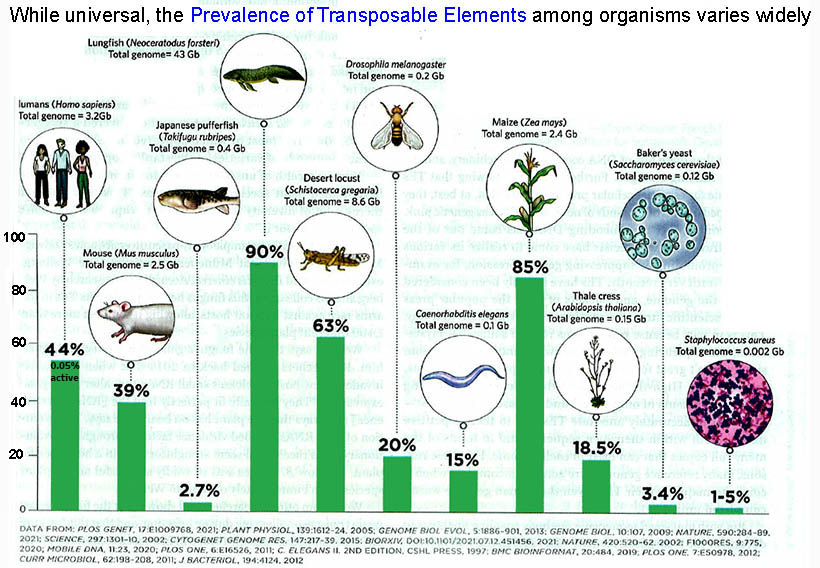The peppered moth (Biston
betularia) in the early 19th century was
a light organism with dark spots. In 1848 a naturalist,
R.S. Edeleston, observed some dark colored moths and by
1900 at the height of the Industrial Revolution in
England 98% of the moths were the dark moths. In 1896
J.W. Tutt suggested that the dark moths were an example of natural selection
resulting in reduced predation, while the
insects rested on soot-stained trees.
In
2016 A.E. van't Hof, et al, established that the Industrial Melanism mutation in
the British Peppered moths was due to a mobile transposible element, a
jumping gene (Nature, 534:102-05).
A DNA
transposable mobile genetic
element of some 22,000 nucleotides was inserted into the first intron
of the moth gene, 'cortex', which dramatically increased of the proteins
involved in wing development and melanin
coloration. Mobile transposable
elements if inserted into gene sequences can and do
alter gene expressions that create mutations, which
might be deadly if they are not silenced by epigentic
modifications, such as methylations, that inactive the
mutated genes.

